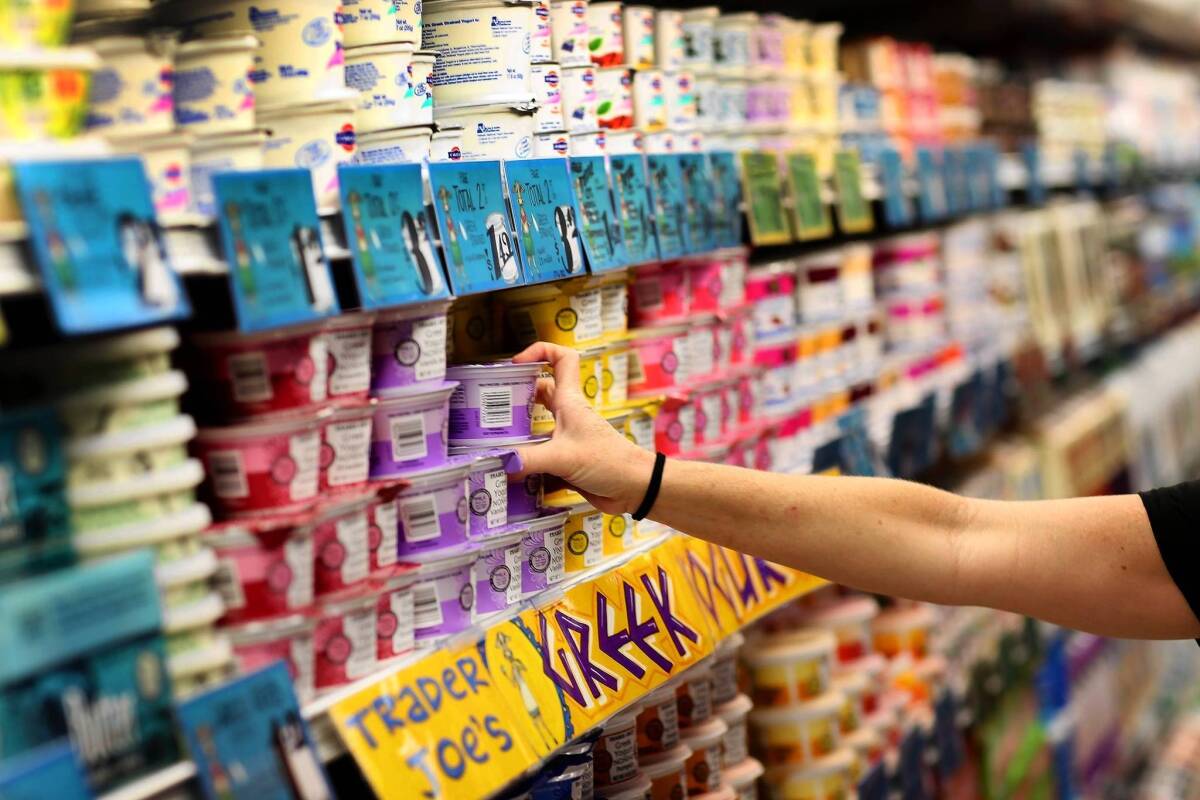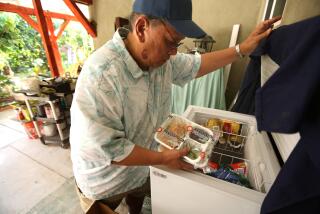Cut in food stamps will hit retailers

U.S. food retailers are poised to take a hit as the federal government reduces its $78 billion-a-year food stamp program.
Grocery stores and other food retailers have struggled in recent years as consumers battered by high unemployment and shrinking wages switched from upscale products to discounted bulk goods and generic brands.
Food sales, especially at discounters such as Wal-Mart Stores Inc., could be further crimped by the $5-billion, or roughly 6%, annual cut in food stamps that took effect Friday.
It “is going to hit those outlets that cater to lower-income consumers — Wal-Mart, dollar stores, grocers also,” said Andrew P. Wolf, an analyst at BB&T Capital Markets. “If you look at it from a macroeconomic point of view, it’s less fiscal stimulus.”
The Supplemental Nutrition Assistance Program has more than doubled in size in the last five years — a sign, some analysts say, of the distress still afflicting low-income Americans more than four years after the official end of the last recession.
Nearly 48 million Americans, or 15% of the country, receive an average of $133 a month.
Congress temporarily boosted SNAP in 2009 as part of its economic triage in the aftermath of the 2008 global financial crisis. The increase expired Friday.
Benefit cuts will vary according to household income and other factors. A family of four would lose about $36 a month, according to the Agriculture Department, which administers the program.
The direct hit to the economy is likely to be muted, equating to just 0.0003% of gross domestic product, according to Nicholas Colas, chief market strategist at New York brokerage ConvergEx Group.
But damage to consumer confidence could be significant, he said. One in five American households is on food stamps, and many people could be rattled as their benefits are chopped.
“It’s not a big number in terms of dollars, but it’s a very big number in terms of people affected,” Colas said.
Some retailers acknowledged the potential damage to their bottom lines.
“We’re a little concerned about the food stamp cut,” Dennis Eidson, chief executive of Spartan Stores Inc., a Michigan supermarket chin, said in a conference call with analysts last week. “That could be a meaningful event for us.”
Other chains downplayed the effect, saying customers will use their own money to buy groceries.
William S. Simon, chief executive of Wal-Mart U.S., told investors that his company could benefit if cash-strapped consumers look for bargains. Wal-Mart estimates that it gets about 18% of all food stamp spending.
“Everybody’s benefit is going to get cut, price will become more important,” Simon said. “And when price is more important, we’re more relevant.”
Analysts, however, doubt that the cut in food stamps would benefit Wal-Mart or other stores. Customers who spend more on food would have to cut back elsewhere, they say.
“I understand why Wal-Mart would want to downplay this,” said Jason A. Moser, an analyst at the Motley Fool. “That’s their job and they want investors to feel like there aren’t any head winds going into this holiday season. But the fact is there are and this could potentially be another one.”
The cut in food stamps comes at a delicate moment for the economy.
Improvements in the job and housing markets this year prompted the Federal Reserve to hint in May that it would start winding down its stimulus program. But some indicators have backtracked since then, especially consumer sentiment, after last month’s partial shutdown of the federal government.
A further hit to confidence could weigh on the overall retail sector in the crucial holiday shopping season. A report by Morgan Stanley on Thursday projected an anemic 1.6% fourth-quarter increase in sales at stores open at least a year, which would be the worst performance since 2008.
Other researchers are more upbeat, saying lower gasoline prices and record highs in the stock market should propel solid Christmas spending.
Retail sales dropped 0.1% in September, although core sales, which exclude automobile sales, rose 0.4%.
The outlook is gloomier for the low-margin grocery industry, which has endured several years of restrained consumer spending. Industry revenue shrank an average 0.4% in each of the last five years, and is expected to be $517.8 billion this year, according to research firm IBISWorld.
The cutback in food stamps is the second hit to low-wage consumers from expiring government stimulus efforts. At the end of last year, Congress did not extend a payroll tax cut that had temporarily reduced Social Security taxes to 4.2% of each paycheck from 6.2%.
The nearly 4.2 million food stamp recipients in California will absorb a collective $457-million reduction in the coming year, according to the Center on Budget and Policy Priorities, a Washington think tank.
Even before her regular SNAP allotment shriveled to $189 from $200, Hawthorne resident Tonya Robinson, 42, was scrambling to supplement her grocery funds at the end of each month.
At a bustling Wal-Mart in Torrance on Friday, a week before her next SNAP delivery, she filled her shopping cart as her 3-year-old son watched. To make the purchase, unemployed Robinson had to dip into her own cash reserves because she’d already used up last month’s SNAP funds.
The scaling back of SNAP will force her to buy groceries with money she sets aside for her $1,000 monthly rent and other bills, she said.
“How am I going to support my son? How am I going to buy him food?” Robinson said. “I think that’s foul because so many people are struggling right now.”
One of them is Rocky Kitchen, who was laid off from a job at Long Beach City College last year.
Kitchen, 53, just ran out of unemployment insurance, and is worried about being able to buy healthful food if his $84 a month in food stamps is cut.
“Why when more people than ever in this nation are hungry, and even [First Lady Michelle Obama] is pushing people to eat healthy, they’re taking away from the people who have the least,” he said.
“People in the government are looking at those as extras, as perks, when actually they’re necessities for life,” Kitchen said. “Not a great life, but just life.”
More to Read
Inside the business of entertainment
The Wide Shot brings you news, analysis and insights on everything from streaming wars to production — and what it all means for the future.
You may occasionally receive promotional content from the Los Angeles Times.











